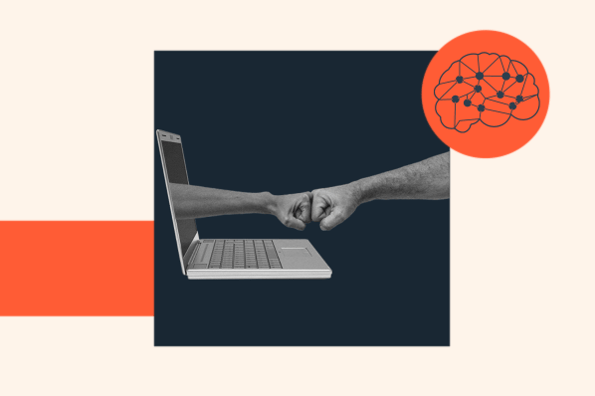Cross Default Explained: The Risk You Can’t Afford to Ignore
Cross default refers to a situation in which defaulting on one obligation triggers a default on other related obligations. This commonly occurs when a borrower defaults on multiple loans or credit agreements.

Credit: blog.hubspot.com
What Is Cross Default
In the financial world, where contracts and agreements are the backbone of business interactions, cross default is a term that often comes up. It may sound complex, but it essentially refers to a provision in a loan agreement or bond contract that triggers a default on one debt when another debt held by the borrower defaults as well. Understanding cross default is crucial for businesses and investors to assess the risk associated with their financial obligations.
Definition
Cross default is defined as a condition that occurs when defaulting on one loan or bond leads to a default on another financial obligation. It is a mechanism used by lenders and bondholders to mitigate risk and protect their investments. When a borrower defaults on a specified debt, such as missing interest payments or breaching covenants, the lender has the right to declare the borrower in default on other debts as well.
Explanation
The idea behind cross default is straightforward. Lenders want to ensure their borrowers are meeting their financial obligations in a timely manner, as agreed upon in loan or bond agreements. When a borrower defaults on a debt, it raises concerns about their ability to repay other debts as well. Lenders include cross default provisions in contracts to protect themselves from potential losses due to defaulting borrowers.
Let’s consider a hypothetical situation:
A company, ABC Corp, has multiple loans and bond issuances. One of the loans requires a minimum interest coverage ratio, which measures the company’s ability to pay interest expense with its earnings. If ABC Corp fails to meet this requirement, it would be considered a default on that specific loan. However, due to the cross default provision, it would also trigger a default on the company’s other debts, even if they are being serviced without any issues.
This provision can have significant implications for the borrower. It can lead to accelerated repayments, higher interest rates, or even the seizure of assets by the lenders. Lenders utilize cross default provisions as a means of protecting themselves and maximizing their chances of recovering their investments in case of default.
Summary
- Cross default is a provision in a loan or bond agreement that triggers a default on one financial obligation when another obligation is defaulted upon.
- It is used by lenders and bondholders to mitigate risk and protect their investments.
- When a borrower defaults on a specified debt, the lender has the right to declare a default on other debts as well.
- The provision ensures that borrowers meet their financial obligations and gives lenders the means to recover their investments in case of default.
Understanding cross default is crucial for businesses and investors, as it helps them assess the risks associated with their financial obligations and make informed decisions.

Credit: therealneville.medium.com
The Impact Of Cross Default
Cross default can have a significant impact on financial agreements, potentially triggering default for a debtor if they default on any other loan. This clause is implemented to protect lenders and ensures timely repayment of debts.
Financial Consequences
When it comes to cross default, the financial consequences can be significant. It is important to understand that cross default clauses are commonly included in loan agreements and bond indentures to protect the lender in case of default by the borrower.
In simple terms, cross default refers to a situation where defaulting on one debt obligation triggers a default on other debt obligations as well. This means that if a borrower fails to make a payment on one loan or bond, it can have a domino effect resulting in default on other loans or bonds as well.
The financial consequences of cross default can be multi-fold. Firstly, it can lead to immediate demands for repayment of all outstanding debt, accelerating the borrower’s payment obligations. This can put immense financial pressure on the borrower, who may not have the necessary funds to meet such demands.
Additionally, cross default can also result in the imposition of higher interest rates or penalties, further adding to the financial burden. The lender may also have the right to take possession of the borrower’s assets in an attempt to recover the outstanding debt. In extreme cases, the borrower may be forced into bankruptcy.
It is important for borrowers to carefully consider the financial consequences of cross default before entering into loan agreements or bond issuances. Understanding the potential risks can help them make informed decisions and take appropriate measures to mitigate any potential financial impacts.
Legal Consequences
From a legal perspective, cross default can have significant consequences for both borrowers and lenders. It is crucial to understand the legal implications of cross default and the rights and obligations it entails.
One of the main legal consequences of cross default is the potential for litigation. In the event of default on multiple obligations, borrowers may be subject to legal action from lenders seeking to enforce their rights. This can involve lengthy and costly legal proceedings, which can further exacerbate the financial burden on the borrower.
In addition, cross default can also result in the acceleration of legal remedies available to lenders. This means that if a default occurs, lenders may be entitled to immediately exercise their rights under the loan agreement or bond indenture, such as seizing collateral or pursuing legal action to recover the outstanding debt.
The legal consequences of cross default can have far-reaching implications for borrowers, potentially impacting their creditworthiness and ability to access future financing. It is therefore essential for borrowers to carefully review and understand the legal terms and conditions associated with cross default clauses before entering into any financial agreements.
How Cross Default Works
In the world of finance and lending agreements, the term “cross default” carries significant weight. It refers to a provision in loan agreements that allows the lender to consider a borrower in default if certain triggering events occur. Understanding how cross default works is crucial for both borrowers and lenders as it affects the dynamics of their contractual relationship.
Triggering Events
Cross default provisions are activated by specific triggering events. These events can vary depending on the terms of the agreement, but typically include:
- Payment default: When a borrower fails to make a required payment on time.
- Breach of financial covenants: When a borrower fails to meet certain financial ratios or performance metrics as outlined in the agreement.
- Material adverse change: When a borrower experiences a significant negative change in their financial condition, such as a major business setback or bankruptcy filing.
- Default on other obligations: When a borrower defaults on any other debt or loan, regardless of whether it is related to the same lender or agreement.
Once any of these triggering events occur, the lender can exercise their rights under the cross default provision, potentially accelerating the repayment of the entire loan or taking other necessary actions to protect their interests.
Default Clause Types
Under cross default provisions, there are two main types of default clauses that lenders employ in loan agreements. These are:
- Cross acceleration clause: This type of clause allows the lender to accelerate the payment of the loan if the borrower defaults on another indebtedness, effectively making all outstanding amounts immediately due and payable. In other words, default on one loan triggers default on all loans with the same lender.
- Cross default clause: This clause enables the lender to declare a default if the borrower breaches any other provisions of a separate agreement. It provides the lender with protection by treating the breaches as if they were a default under the initial agreement.
Both types of default clauses give lenders the ability to take swift action when a default occurs, safeguarding their financial position and mitigating potential losses. For borrowers, it is essential to be aware of the presence of these clauses as they can have significant ramifications if default does occur.
Preventing Cross Default
When it comes to financial agreements, the concept of cross default is an important consideration for both lenders and borrowers. Cross default occurs when a default on one loan or financial obligation triggers a default on other interconnected loans or contracts. This domino effect can have severe consequences, making it crucial to implement measures to prevent cross defaults. In this section, we will discuss two essential strategies to mitigate the risk of cross defaults: negotiating contract terms and implementing risk management strategies.
Negotiating Contract Terms
One effective way to prevent cross defaults is by carefully negotiating the terms of your financial agreements. Ensuring a clear and concise definition of default events is essential. By clearly defining what constitutes a default, you can avoid any ambiguity that may trigger a cross default. Moreover, it is vital to include provisions that limit cross defaults to situations where the default has a material adverse effect on the borrower’s ability to meet their obligations. By setting these parameters, you can protect yourself from facing unnecessary defaults due to insignificant breaches.
Risk Management Strategies
In addition to negotiating contract terms, implementing robust risk management strategies can also safeguard against cross defaults. Conducting a thorough analysis of your financial exposure and carefully monitoring your financial health can help identify potential areas of risk. By regularly assessing your financial position and addressing any possible red flags promptly, you can take proactive measures to prevent defaults.
Moreover, diversifying your sources of funding can also minimize the risk of cross default. Relying on a single lender or having interconnected loans with the same lender can significantly increase the risk of cross defaults. By diversifying your funding sources among different lenders or financial institutions, you reduce the chances of all your loans becoming subject to a cross default triggered by a single event.
In conclusion, preventing cross default is crucial for maintaining financial stability. By negotiating contract terms and implementing risk management strategies, you can minimize the potential impact of defaults on your financial obligations. Take the necessary precautions to define default events clearly, limit the scope of cross defaults, and regularly assess your financial position. These preventive measures will help you navigate your financial agreements with confidence and protect yourself from severe consequences.
Case Studies: Cross Default In Action
Understanding how cross default works in real-life scenarios can provide valuable insights into the importance of this clause. In this section, we will explore notable examples and the lessons learned from them.
Notable Examples
1. Company XYZ: Company XYZ, a multinational corporation, experienced financial difficulties due to unfavorable market conditions. As a result, they were unable to meet the debt obligations specified in their loan agreements. Since these agreements included cross default provisions, their default triggered default clauses across several other loans. This resulted in a chain reaction of financial complications for the company.
2. Real Estate Developer ABC: Real Estate Developer ABC secured multiple loans to fund different projects. Unfortunately, one of their major projects encountered significant delays and cost overruns, leading to a default on one of their loans. Due to the cross default clause included in their other loan agreements, the default triggered a series of events, including higher interest rates, accelerated repayment schedules, and potential lawsuits from lenders.
Lessons Learned
The aforementioned case studies highlight key lessons regarding the impact and importance of cross default provisions:
- Thorough Due Diligence: Before entering into loan agreements, conducting comprehensive due diligence on market conditions, financial projections, and project risks is crucial. This allows businesses to accurately assess their ability to meet their obligations and minimize the risk of default.
- Consider Alternatives: Businesses should consider negotiating the terms of cross default provisions to ensure they are fair and reasonable. This may involve setting thresholds for triggering default provisions or excluding specific events that may not significantly impact the borrower’s ability to repay the loan.
- Financial Risk Management: Adequate risk management strategies, such as maintaining sufficient cash reserves or implementing hedging mechanisms, can help mitigate the impact of default events. Diversifying funding sources can also reduce reliance on a single loan agreement triggering cross defaults.
- Strict Compliance: Businesses must closely monitor their financial performance and promptly address any potential defaults to avoid triggering cross default provisions. Timely communication with lenders and proactive measures to address financial issues can help mitigate the consequences of default.
By examining these case studies and the lessons learned, businesses can better understand the implications of cross default and take proactive steps to mitigate risks and protect their financial stability.
:max_bytes(150000):strip_icc()/medical-debt-what-do-when-you-cant-pay-final-b9f17179fd9949dfaa432b1500df1357.jpg)
Credit: www.investopedia.com
Frequently Asked Questions For Cross Default
What Is A Cross Default?
A cross default is a clause in a loan agreement that allows the lender to declare a default if the borrower defaults on another loan with a different lender. It ensures that the borrower’s default on one loan triggers a default on other loans as well.
How Does A Cross Default Work?
When a borrower defaults on a loan covered by a cross default clause, the lender can accelerate the repayment of all outstanding loans, making them due immediately. This is designed to protect the lenders and ensure that they have the right to collect their debts if the borrower fails to meet their financial obligations.
Why Are Cross Default Clauses Important?
Cross default clauses are important for lenders as they provide a safety net in case the borrower defaults on their obligations. It gives lenders the right to take action and protect their interests by declaring a default on all loans, rather than having to wait until each individual loan defaults before taking action.
Can A Cross Default Be Avoided?
In some cases, it may be possible to negotiate the removal or modification of a cross default clause. However, this would require agreement from all parties involved, including the lenders. It is advisable to thoroughly review loan agreements before signing to ensure that you understand and are comfortable with any cross default clauses included.
Conclusion
To sum up, understanding the concept of cross default is crucial for businesses to navigate the potential risks involved in financial agreements. By comprehending how defaulting on one obligation can trigger defaults on other contracts, companies can take proactive measures to mitigate the impact.
Stay alert to contractual terms, seek legal advice, and maintain clear communication to ensure financial stability and protect your business interests.
{ “@context”: “https://schema.org”, “@type”: “FAQPage”, “mainEntity”: [ { “@type”: “Question”, “name”: “What is a cross default?”, “acceptedAnswer”: { “@type”: “Answer”, “text”: “A cross default is a clause in a loan agreement that allows the lender to declare a default if the borrower defaults on another loan with a different lender. It ensures that the borrower’s default on one loan triggers a default on other loans as well.” } } , { “@type”: “Question”, “name”: “How does a cross default work?”, “acceptedAnswer”: { “@type”: “Answer”, “text”: “When a borrower defaults on a loan covered by a cross default clause, the lender can accelerate the repayment of all outstanding loans, making them due immediately. This is designed to protect the lenders and ensure that they have the right to collect their debts if the borrower fails to meet their financial obligations.” } } , { “@type”: “Question”, “name”: “Why are cross default clauses important?”, “acceptedAnswer”: { “@type”: “Answer”, “text”: “Cross default clauses are important for lenders as they provide a safety net in case the borrower defaults on their obligations. It gives lenders the right to take action and protect their interests by declaring a default on all loans, rather than having to wait until each individual loan defaults before taking action.” } } , { “@type”: “Question”, “name”: “Can a cross default be avoided?”, “acceptedAnswer”: { “@type”: “Answer”, “text”: “In some cases, it may be possible to negotiate the removal or modification of a cross default clause. However, this would require agreement from all parties involved, including the lenders. It is advisable to thoroughly review loan agreements before signing to ensure that you understand and are comfortable with any cross default clauses included.” } } ] }





